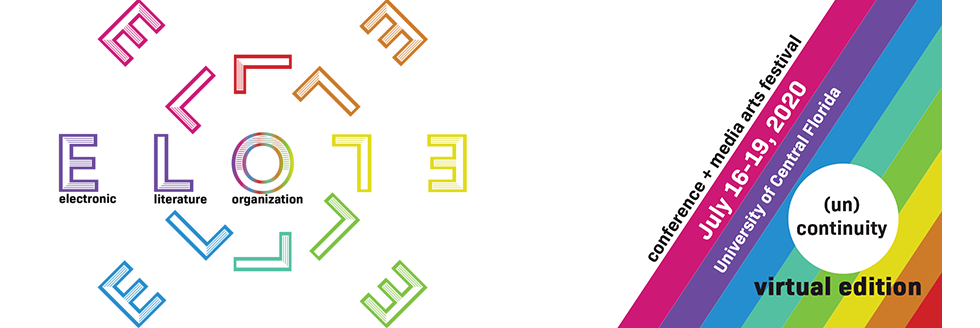Proposal Title
Loading...
Submission Type
Conference Talk - Individual
Abstract
From The Guardian to The Sydney Morning Herald, reviews for walking simulator and haunted stealth-shooter Death Stranding (2019) refer to its creator, Hideo Kojima, as an “auteur.” Kojima, best known for the Metal Gear Solid series, remains one of the few recognizable names in video game design. His work has been praised for its innovative gameplay, involved stories, and high production values. Death Stranding is the culmination of Kojima’s achievements to-date, and its sumptuous attention to recreating the movement and framing of a live-action film begs for the game and Kojima himself to be placed in conversation with cinema in addition to (or, perhaps, instead of) AAA gaming. Death Stranding’s star-studded cast, including Norman Reedus as protagonist Sam “Porter” Bridges, Mads Mikkelsen as the shadowy Cliff, and cameos from Hollywood directors like Edgar Wright and Guillermo del Toro, only make his auteur ambitions more explicit. Whether we evaluate Death Stranding’s merits in the language of the male-dominated video game industry or the male-dominated film industry, however, it is little surprise that the game’s dystopian “UCA” (United Cities of America) is principally about men and features a male player avatar. Yet examining how Kojima presents Death Stranding as auteur masterpiece, and how the game in turn communicates its message of connectivity and community to its players, reveals how Kojima coopts symbols of female pregnancy to tell stories of male legacy and authorship.
My conference paper will discuss how Death Stranding participates in a tradition of science-fiction about male reproduction, detail the effects of displacing the physical realities of pregnancy onto a playable male body, and conclude with an examination of the barren, broken, and sexualized bodies of Death Stranding’s women. I will show how the game combines overt references to pregnancy—most notably the Bridge Baby (BB), a prenatal infant housed in a pod wirelessly connected to the womb of their brain-dead “stillmothers” and physically tethered to Sam’s body via cybernetic umbilical cord—with gameplay and body presentation that translates the difficulties of navigating the world as a pregnant body into package delivery. The precarity of Sam and his BB’s tethered bodies is demonstrated through gameplay mechanics like safely balancing Sam and his precious cargo over diverse terrain, stamina and BB autotoxemia meters, and Death Stranding’s attention to Sam’s sore and bloodied feet and the “bra” bruises imprinted on his shoulders from his overfull backpack. While Death Stranding’s world is predominantly populated by prominent men in film and video games, women like package deliverer Fragile (Lea Seydoux), the USC President (Lindsay Wagner), and mysterious tech-expert Mama (Margaret Qualley) are defined in part by their literal and metaphorical infertility. It is Sam’s body—encoded with the bodily impact and dangers of his “labors” and “deliveries”—that is productive, connective, and playable. Death Stranding, in short, imagines a future where men imbue the world with new life, while women’s bodies and pain are beautifully rendered on screen but ultimately stillborn.
Playing Pregnant in Death Stranding
From The Guardian to The Sydney Morning Herald, reviews for walking simulator and haunted stealth-shooter Death Stranding (2019) refer to its creator, Hideo Kojima, as an “auteur.” Kojima, best known for the Metal Gear Solid series, remains one of the few recognizable names in video game design. His work has been praised for its innovative gameplay, involved stories, and high production values. Death Stranding is the culmination of Kojima’s achievements to-date, and its sumptuous attention to recreating the movement and framing of a live-action film begs for the game and Kojima himself to be placed in conversation with cinema in addition to (or, perhaps, instead of) AAA gaming. Death Stranding’s star-studded cast, including Norman Reedus as protagonist Sam “Porter” Bridges, Mads Mikkelsen as the shadowy Cliff, and cameos from Hollywood directors like Edgar Wright and Guillermo del Toro, only make his auteur ambitions more explicit. Whether we evaluate Death Stranding’s merits in the language of the male-dominated video game industry or the male-dominated film industry, however, it is little surprise that the game’s dystopian “UCA” (United Cities of America) is principally about men and features a male player avatar. Yet examining how Kojima presents Death Stranding as auteur masterpiece, and how the game in turn communicates its message of connectivity and community to its players, reveals how Kojima coopts symbols of female pregnancy to tell stories of male legacy and authorship.
My conference paper will discuss how Death Stranding participates in a tradition of science-fiction about male reproduction, detail the effects of displacing the physical realities of pregnancy onto a playable male body, and conclude with an examination of the barren, broken, and sexualized bodies of Death Stranding’s women. I will show how the game combines overt references to pregnancy—most notably the Bridge Baby (BB), a prenatal infant housed in a pod wirelessly connected to the womb of their brain-dead “stillmothers” and physically tethered to Sam’s body via cybernetic umbilical cord—with gameplay and body presentation that translates the difficulties of navigating the world as a pregnant body into package delivery. The precarity of Sam and his BB’s tethered bodies is demonstrated through gameplay mechanics like safely balancing Sam and his precious cargo over diverse terrain, stamina and BB autotoxemia meters, and Death Stranding’s attention to Sam’s sore and bloodied feet and the “bra” bruises imprinted on his shoulders from his overfull backpack. While Death Stranding’s world is predominantly populated by prominent men in film and video games, women like package deliverer Fragile (Lea Seydoux), the USC President (Lindsay Wagner), and mysterious tech-expert Mama (Margaret Qualley) are defined in part by their literal and metaphorical infertility. It is Sam’s body—encoded with the bodily impact and dangers of his “labors” and “deliveries”—that is productive, connective, and playable. Death Stranding, in short, imagines a future where men imbue the world with new life, while women’s bodies and pain are beautifully rendered on screen but ultimately stillborn.




Bio
Korine Powers is a PhD candidate studying violence and masculinity in postwar American film and fiction. She has previously presented on the limitations of the video game avatar at Boston University’s 2018 #NoFilter conference. Her work on popular masculinity recently appeared in the Spring 2020 issue of Twentieth-Century Literature and the anthology Critical Essays on Elmore Leonard (Wiley 2020).